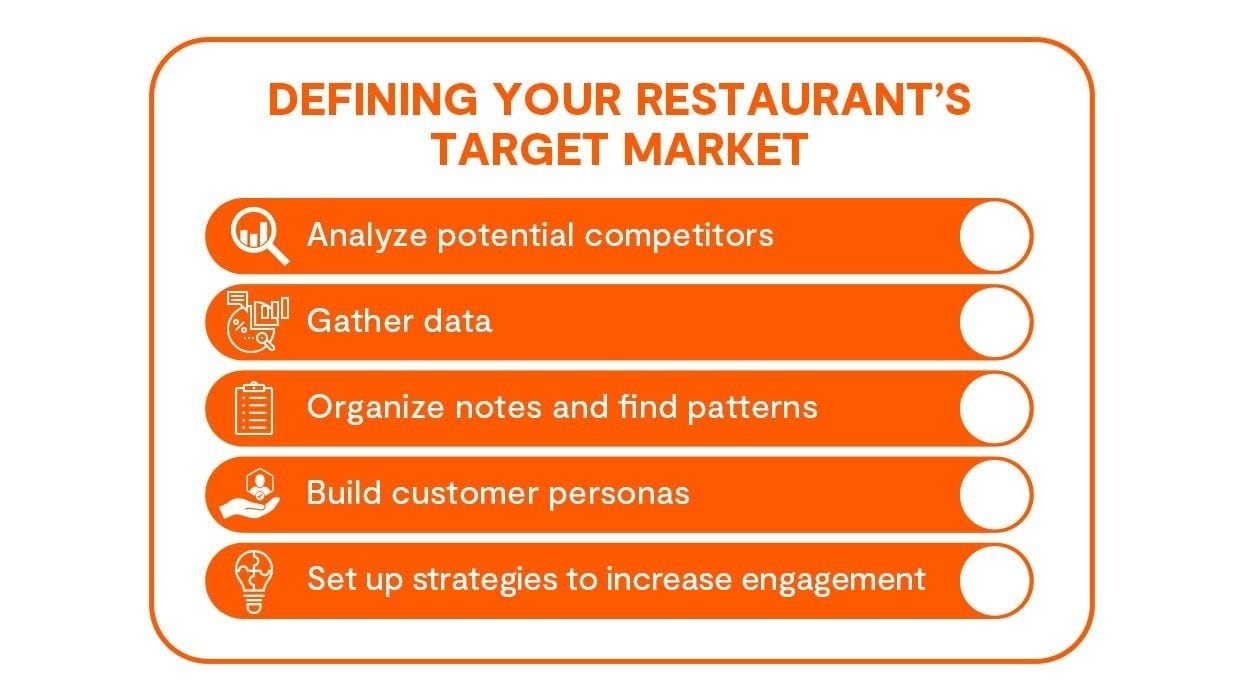The customer may be king, but do you truly understand who wears the crown? Knowing your restaurant’s target market is the foundation for making crucial decisions – from crafting a hit menu to building a marketing campaign that sticks. Fact: defining and consistently engaging your audience will be the key driver of your restaurant’s success.
Trying to cater to everyone, from Filipino families to Gen Z, can dilute your brand, leaving no lasting impact. So, how do you identify your customers and narrow down your audience? Read on for the lowdown.
What Is a Restaurant Target Market?

Your target market can encompass diverse ages and backgrounds.
Your target market is the specific group of diners you aim to attract. These people will browse your menu, enjoy your dishes, and keep coming back – whether for dine-in, takeout, or delivery.
From the vast pool of diners in the Philippines, your goal is to carve out a slice that drives the sales and success you need.
The Benefits of Defining Your Target Market
Including a well-defined target market in your business plan is crucial. Without a clear audience, your marketing will lack focus, and you’ll keep an inconsistent customer base. You might even end up with a menu that doesn't resonate with anyone.
Defining your target market helps you:
- Identify how and where to reach your customers.
- Communicate effectively, choosing the right channels and messages.
- Select a location that aligns with where your audience lives, works, or spends time.
- Pinpoint your direct and indirect competitors.
- Differentiate your business from the competition.
- Curate and design a menu that appeals to your target audience.
- Decide which food trends to embrace.
- Optimize operations to enhance your customers’ dining experience.
- Build a brand that aligns with your market’s tastes.
- Craft marketing campaigns aimed at the right demographics.
How to Define Your Restaurant’s Target Market
Follow these steps to define the customer base you need to attract and delight with your food.

1. Analyze potential competitors.

Experience your competitors’ restaurants as a regular paying customer.
Before diving into the market, take a close look at your competition to find ways to stand out. However, not every establishment in your area is your direct competitor. Focus on those with similar pricing, cuisine, and service. Visit some of these restaurants (aim for at least three!) and assess the following:
- The guests: Who are they? What do they wear? What is their age range? How much are potential customers willing to spend? How long do they stay?
- The orders: What type and quantity of food are they ordering?
- The menu: How is it structured? How are items categorized and priced?
- The service: How does the front-of-house staff treat customers?
- The environment: What’s the ambiance like? What music and lighting do they use?
- The extra perks: What unique elements does the restaurant offer?
Then, identify gaps your competitors do not address. Or, you can improve on what they offer – with better service, higher quality food, or a more inviting atmosphere – to attract the same market.
2. Gather data.
Next, collect hard facts and statistics to help identify your potential customers. You can check available databases online. Or, approach your barangay or the city hall for location-based information like population demographics, foot traffic patterns, and local business activity (for competitor analysis). If you’re considering a mall location, inquire about customer data. If you have the budget, you can also run surveys or focus group discussions for deeper insights.
3. Organize notes and find patterns.
Once you’ve gathered your data, look for patterns. Narrow down your findings to profiles that will drive the most sales. Identify common traits to define your target market’s:
- Demographics: Age, gender, location
- Psychographics: Lifestyle choices, values, social drivers, preferred music and ambiance, reasons for dining out
- Behavior: Clothing, spending habits, dining frequency, dining companions
4. Build customer personas.
Take your understanding of your audience a step further by creating customer personas. These are fictional representations that help you visualize your market. They also allow you to tailor your marketing, engagement, and operational strategies more effectively.
Start with one primary customer profile, then add three or four secondary profiles. Here’s a target market example:
- Name: Belle
- Demographic: A 35-year-old new mom living in a condo next to the mall where the restaurant is located.
- Psychographic: Health-conscious, works out three times a week, enjoys lo-fi music and airy environments. She values high-quality ingredients.
- Behavior: Often wears athleisure and orders hearty salads with protein. She spends ₱600 per meal and prefers umami-rich flavors, like Knorr Chicken Powder, over simple salt and pepper.
How to Engage Your Target Market
Defining your customer base is only the first part of the challenge. To truly succeed, you need to keep them engaged so they return, bring friends, and spread the word. Here are strategies to implement:
1. Create menu specials tailored to their preferences.

Personalize your menu to align with your market’s evolving preferences.
Cater directly to your market by developing recipes based on their liking. Even niche items can create a loyal following if they meet your customers’ tastes. Go ahead and focus on personalization! For example, for a health-conscious customer like Belle, you can offer a Hi-Protein Salad Bowl with Garlic Shrimp and Calamansi-Soy Vinaigrette.
2. Establish a loyalty program.
Use your understanding of your audience to design a loyalty program that keeps them coming back. Offer points for visits, which they can convert into free meals, merchandise, or discounts. You can also reward them on birthdays or special occasions, strengthening their bond with your brand.
3. Host community-building events.

Hold events that encourage customers to bring potential diners and connect with others.
Organize events that foster a sense of community and create a buzz that draws in more customers. Some options are run clubs with free post-workout smoothies, themed dinners fit for families, or quiz nights.
4. Go heavy on social media.
Engage your audience with content tailored to each platform. Use Facebook for promos, Instagram for new menu launches, and TikTok for behind-the-scenes clips. Play around with polls and quizzes, too. And encourage user-generated content to strengthen the sense of community.
Regularly review your restaurant's target market to keep your business on track. Ask yourself: Are you still reaching the right audience to drive sales? As your business grows and operations pivot, your market may evolve. You might need to expand your appeal or narrow your focus to streamline efforts. Stay adaptable and open to change. As long as you stay connected with your audience, you’ll continue moving in the right direction.








